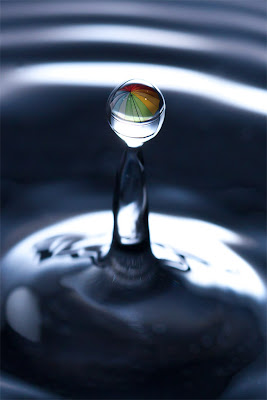This will probably be my LAST post for The Art of Photography as I have now completed the module and received my tutor's feedback.
I had finished my assignment, not exactly in a rush, but without my usual lengthy pondering. Since I had used a commercial job as the basis for my photographs I felt that I should treat the assignment in a similar way. My customer wanted an efficient job done with a hard deadline in mind as the printer was waiting and distribution of the new season's brochures was needed promptly. So I shot everything in two afternoons and had the pictures back to him in 48 hours. With that in mind and considering the brief was for a magazine article I worked to a tight schedule to get the job completed with no messing about.
This approach certainly didn't seem to affect my feedback as my tutor started by stating that he considered it a very strong assignment, very professional and would easily fit into a 'real' context.
He liked the mix of imagery mixing industrial with strong landscape work. He liked the straightforward approach that I took, avoiding jazzy angles or anything too gimmicky. I received praise for managing to document each stage clearly, for the layout and for the tone of the text as well.
He felt that the individual images were clear, legible and had a commercial feel to them. He did feel, however, that because the subject was aimed at emphasising the hand-crafted and traditional approach taken by the manufacturer I might have used natural light a bit more, relying less on lighting assistance. By using more natural light I might have generated more shadow and made the photographs more atmospheric. In reality I only used a single reflector but the workshop was very well lit and there were few shadows to be found. I have to say that my tutor's remarks are valid and I would have preferred the look of a single light source rather than the all round light that I achieved. I retrospect perhaps I could have generated a little more shadow by blocking light. This is a technique I haven't practised and must give it more thought in the future.
My camera work and photoshop skills were favourably commented on but the final image of a bat floating on a background of wood detail wasn't considered as sophisticated as the rest of the spread. It was suggested that perhaps a bat amongst wood shavings or raw timber might have looked better. I take this point but didn't have that shot amongst my choices... in fact my only finished bat shots were product shots so I was forced to use a cut out somewhere. We learn at every step and my learning point here was that it was the end of a long shoot and when it came to the final images my brain and trigger finger were heavily fatigued!
The final conclusion was a pleasure to read...
"Keep doing what you are doing! Sorry I can't be more critical this time!"
Don't worry about it Jesse, I am sure someone else will be!

















